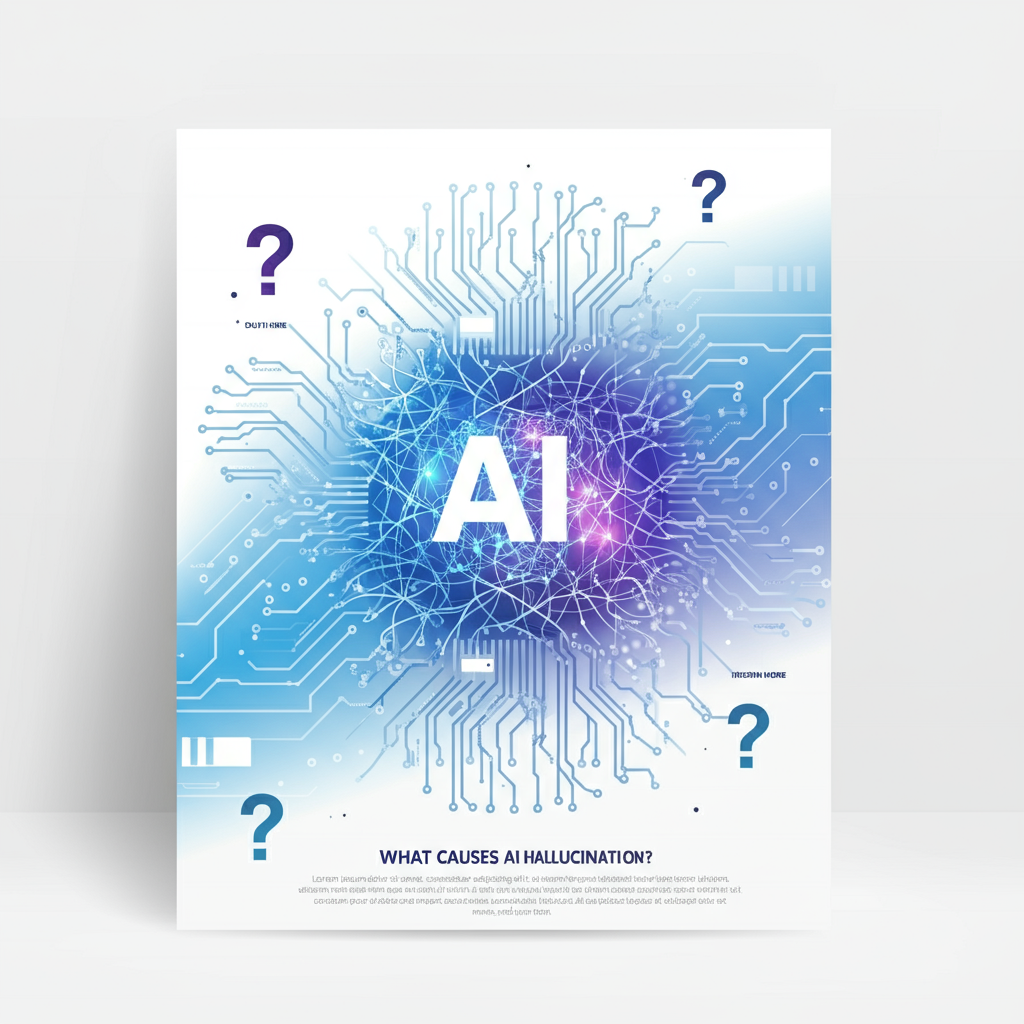Artificial Intelligence (AI) has revolutionized how we work, interact, and innovate. From personalized recommendations on streaming platforms to groundbreaking advancements in healthcare, AI systems are becoming more integrated into our daily lives. Yet, alongside their successes lies a critical challenge that often goes unnoticed by the average user AI hallucinations. These moments, where AI systems generate outputs that are entirely false, illogical, or irrelevant, are emerging as a growing concern, particularly in high-stakes areas such as medicine, finance, and decision-making.
This blog will explore what AI hallucinations are, how they differ from traditional errors, what causes them, and their potential risks and implications. We’ll also provide actionable strategies for mitigating these hallucinations while examining future trends that could shape the safety and reliability of AI systems.
What Are AI Hallucinations?
Defining AI Hallucinations
An AI hallucination occurs when an AI system outputs information or predictions that are completely untrue, fabricated, or nonsensical. While this might sound eerily human, these are not instances of the AI “lying.” Instead, they stem from limitations in the algorithms, training data, or contextual understanding of the system.
For example, a language-based AI might confidently generate an incorrect citation in an academic paper or make up a non-existent book title when prompted, despite being programmed to provide sources. This behavior is not due to malice but rather limitations in how the model interprets and generates responses.
How They Differ from Bias and Errors
While traditional AI errors are often attributed to inadequate data or flawed algorithms and biases stem from imbalances in training data, hallucinations are unique in that they occur even when an algorithm performs as intended. They are “creative” errors deeply embedded in how models, especially large language models (LLMs) like OpenAI’s GPT or Google’s Bard, function.
Real-World Examples
- Healthcare:
- A medical AI system misdiagnoses a condition by combining inaccurate data points into its recommendation.
- Finance:
- An AI used for trading creates strategies based on fabricated trends, leading to market losses.
- Legal and Documentation:
- Generative AI drafts legal documents containing non-existent case laws, making the output unusable and misleading.
These examples underscore the potential for AI hallucinations to disrupt various industries and the importance of addressing this challenge.
What Causes AI Hallucinations?

Understanding why AI hallucinates is crucial for addressing the issue. Here are the most common causes:
Data Quality and Quantity
AI performance heavily relies on the quality, diversity, and quantity of its training data. If the data contains gaps, inaccurate information, or biases, the model may “fill in the blanks” by generating false outputs to provide a response.
For example, a language AI trained on less-representative datasets may hallucinate when discussing niche topics, as it lacks the groundwork to offer an informed answer.
Model Complexity
The sheer complexity of modern deep learning models is a double-edged sword. While intricate architectures allow for nuanced predictions and impressive capabilities, they can also act as a black box, making outputs unpredictable. Overly complex models sometimes overgeneralize data, leading to hallucinations.
Contextual Understanding
AI models often fail to recognize nuances or contextual cues. Unlike humans, who interpret meaning within situational boundaries, AI relies on patterns and probabilities. This lack of true contextual understanding opens the door to hallucinations, especially in ambiguous queries.
Risks and Implications of AI Hallucinations
The risks stemming from AI hallucinations extend beyond inconvenience. Here are some ways these errors could impact critical areas:
Misinformation and Trust
- Risk:
Hallucinated outputs can spread misinformation, damaging user trust and public perception of AI reliability.
- Example:
Imagine AI-powered news aggregators displaying fabricated information as factual. The result? Readers form false beliefs affecting critical decisions.
Legal and Ethical Concerns
- Risk:
Organizations implementing hallucination-prone AI systems could face lawsuits or regulatory pushback over misuse or harm caused by incorrect outputs.
- Example:
An autonomous vehicle mistakenly identifying a clear road as obstructed could lead to accidents, raising liability issues.
Operational Inefficiency
- Risk:
Hallucinations disrupt workflows, resulting in wasted time, incorrect decisions, and financial losses.
- Example:
A supply chain AI produces false inventory forecasts, leading to overstocking or stockouts.
Mitigation Strategies for AI Hallucinations

Mitigating the risks of AI hallucinations requires a combination of technical, procedural, and cultural measures:
Data Curation and Augmentation
- Action:
Improve training data by carefully curating diverse, unbiased, and accurate datasets.
- Implementation:
Supplement training with synthetic datasets that simulate rare scenarios to bridge data gaps.
Model Monitoring and Feedback Loops
- Action:
Implement regular performance evaluations to detect and correct hallucination frequencies.
- Implementation:
Develop robust feedback loops allowing human reviewers to flag and refine outputs over time.
Human Oversight
- Action:
Delegate critical decisions to human experts for verification.
- Implementation:
Models used for high-stakes purposes require a human-in-the-loop approach, ensuring outputs do not bypass scrutiny.
Future Trends in AI Safety and Hallucination Mitigation

The technology landscape is evolving rapidly, with promising innovations aimed at addressing AI hallucinations.
Advancements in AI Safety
Emerging techniques like adversarial training and anomaly detection focus on identifying and rectifying hallucinations during the training process.
Enhanced Evaluation Metrics
Researchers are developing advanced metrics explicitly designed to measure generative model reliability, testing for hallucination likelihood before deployment.
Regulatory Frameworks
Governments and international organizations are crafting regulations to govern AI use in sensitive industries, emphasizing transparency and accountability.
Final Thoughts Understanding and Addressing AI Hallucinations
AI hallucinations are not merely an academic concept but a real-world challenge impacting industries and individuals alike. Recognizing the causes and implications of hallucinations is the first step toward preventing them. Through improved practices, continuous monitoring, and the integration of human expertise, we can mitigate their risks while harnessing the immense potential of AI.
Want to explore the world of AI further? Take a deeper look into mitigating risks while adopting AI, and ensure the systems you use align with your goals and values.



